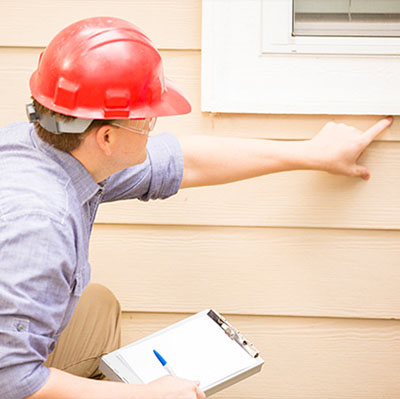What To Watch For During Termite Swarm Season
- Details

Termite infestations can remain undetected even during active infestations. This is due to their unique behavior and the fact that termites tend to remain hidden in moist soil or wood, but there are signs to watch for, particularly during swarm season.
Knowing what actions to take and the common signs of termite activity can significantly reduce the risk of damage to your property. It's essential to remember that prompt action is vital if termite activity is suspected. Once termite colonies form, severe structural damage can happen fast.
Why Termites Swarm
Termites swarm as part of their natural reproductive process. Swarming usually occurs in the spring or summer when the weather is warm and humid. The primary purpose of swarming is to establish new colonies. Swarmers are produced by mature colonies, which means that if you see swarmers around your property, it's likely that a well-established colony is nearby.
Swarmers looking for a place to start a new colony may target your home and nearby structures, especially if moisture and wood are present. Understanding what termite swarms look like and what to do if you see them can help protect your property from these destructive pests.
Signs of a Termite Swarm: What to Look For
During termite swarm season, it's crucial to know the signs indicating a potential infestation. One of the most obvious signs is the sudden appearance of winged termites, known as swarmers, around windows and doors.
Discarded wings from the swarmers may be spotted around the exterior of structures and entryways, particularly near windowsills. Termites shed these wings once they find a possible space to start a new colony. Mud tubes on exterior walls, wooden beams, or crawl spaces are other indicators of termite activity. These tubes are used by termites to travel while being protected from harsh conditions and other threats.
Preventative Measures to Keep Termites at Bay
Preventing a termite infestation begins with eliminating conditions that attract them. Ensure that any wood-to-soil contact around your home is minimized. This can be achieved by keeping firewood, dead tree limbs, and lumber away from your foundation and crawl space. You should also maintain proper ventilation in your attic and crawl space to reduce moisture buildup.
Seal any cracks or crevices in your home's foundation and exterior walls to prevent termites from entering. Regularly inspect and repair any leaks in your plumbing, roof, or gutters to prevent water from accumulating near your home's foundation. By taking these preventative measures, you can significantly reduce the risk of a termite infestation.
Actions to Take if You Suspect a Termite Infestation
If you suspect a termite infestation, it's essential to act quickly. While some preventative measures can minimize the risk of damage to homes, a professional pest control inspection is the best course of action if you notice signs of a termite infestation. Proven termite treatments effectively target active infestations and prevent new colonies.
Professional pest control is a vital part of reducing the risk of termite damage. The pros have the expertise and tools necessary to protect your home from termite damage and assess the extent of any infestation. Ongoing monitoring and maintenance are essential to ensure your property is protected against termites.
Professional Termite Inspections and Treatment
An inspection by a professional pest control company to identify active infestations will give you peace of mind. Experienced technicians have the equipment necessary to provide effective treatments. If you suspect you have a termite problem, contact the termite experts at Eagle Pest Services at 866-281-1822 or schedule your termite inspection online.





